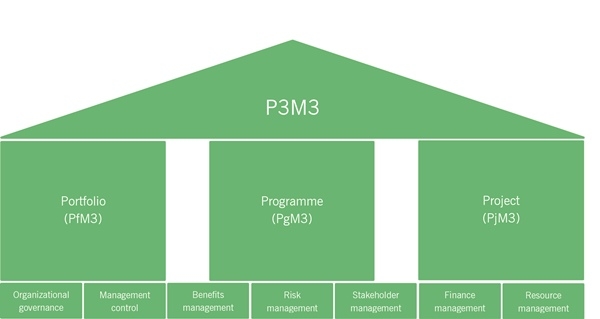Department for Energy and Climate Change shares its experience with P3M3® v3.0
Case Study


Case Study

- Case Study
- Portfolio management
- Programme management
- Project management
- Project progress
- P3M3
January 20, 2016 |
6 min read
- Case Study
- Portfolio management
- Programme management
- Project management
- Project progress
- P3M3
All of our White Papers and Case Studies are subject to the following Terms of Use.
Although the Department for Energy and Climate Change (DECC) is one of the smaller UK central government departments, the 2015 Annual Report by the Cabinet Office’s Major Projects Authority showed it has the largest portfolio; in terms of whole life costs with projects valued at £169 billion. In this case study, DECC compares the latest version (3.0) of the consultant-led full assessment of the P3M3® with the previous version (2.1).
Introduction
Although the Department for Energy and Climate Change (DECC) is one of the smaller UK central government departments, the 2015 Annual Report by the Cabinet Office’s Major Projects Authority showed that DECC had the largest portfolio of all Government departments; in terms of whole life costs with projects valued at £169 billion. The programmes and projects comprising the portfolio are, often, of high risk and with little precedent, as DECC strives to make sure the UK has secure, clean, affordable energy supplies and to promote international action to mitigate climate change.
In this case study, DECC compares the latest version (3.0) of the consultant-led full assessment of the Portfolio, Programme, and Project Management Maturity Model (P3M3®) with the previous version (2.1). Having used both for maturity assessments, DECC found that the results were comparable.
1.1 P3M3
P3M3 provides a framework that organizations can use to benchmark their current performance and plan for improvement when managing and delivering change. First released in 2005, it provides three maturity models, that can be used together or separately, to focus on specific areas of the business or, more generally, to help organizations assess the relationship between their portfolios, programmes and projects.
Maturity in P3M3 is described by a five level framework, where each level identifies ‘how well’ the organization has embedded portfolio, programme and project management processes.
- Level 1: Awareness of process
- Level 2: Repeatable process
- Level 3: Defined process
- Level 4: Managed process
- Level 5: Optimized process.
In addition, P3M3 focuses on seven perspectives, (see figure 1.1), that exist across the three models and are assessed at all five maturity levels. The perspectives group together one or more processes, and are:
- Organizational governance
- Management control
- Benefits management
- Risk management
- Stakeholder management
- Finance management
- Resource management.
For each of the perspectives there are a number of attributes defined at each level of maturity. They are used to illustrate what an organization does at that particular level of maturity. During an assessment these attributes are the basis on which organizations should assess their current maturity and make plans for improvement.

In 2015, AXELOS released version 3.0 of P3M3 following extensive customer feedback and a successful pilot programme with consulting organizations.
P3M3 v3.0 allows users to analyze commercial, asset and behavioural aspects, so they can address the control of projects delivered by third party contractors. This helps protect the assets that are created by a project and builds an understanding of how the attitudes and behaviours of people involved can affect outcomes.
1.2 Background
In 2011, in line with many major UK Government departments, DECC commissioned a P3M3 assessment of its current capability; in terms of portfolio, programme and project management. There was a strong leadership desire to improve the performance of the department and having an independent, objective assessment of the current situation would enable a coherent development plan to be put into place.
Comparing the assessments
2.1 How did the original assessment go?
The first assessment was conducted in early 2013, using P3M3 version 2.1.
John Power, Head of Project Delivery, who commissioned the work, reflects:
“The results were presented using the standard v2.1 templates and, although they were relatively easy to understand, they did not give a lot of insight into the root cause issues that we would need to address or the journey that we would need to take. Part of the reason for selecting Aspire Europe was that they had extensive experience of other organizations and had additional diagnostic tools, so they were able to help interpret the results for us and develop a detailed improvement plan that addressed some of the core issues”
For details of how to obtain a consultant-led assessment see About Axelos section.
https://www.axelos.com/best-practice-solutions/p3m3/what-is-p3m3
2.2 How did this compare to the assessment using version 3.0?
In early 2014, a follow up assessment was undertaken to assess the impact of the work and DECC agreed to be part of the version 3.0 beta testing being managed by AXELOS. The second assessment was a full review of the three (portfolio, programme and project) models against the 2013 baseline.
DECC were the first organization to officially take part in the beta testing programme. The key areas that were being tested were the effectiveness of the wider scope of a P3M3 assessment built into version 3.0, the degree of backward compatibility and whether the change in scope would affect DECC’s ratings.
John Power explains:
“We were concerned that the new version might mark us down, because it had more breadth and more depth, and that the work which had gone into implementing improvements would not be sufficiently recognized when assessed against this wider range of areas.”
2.3 How does version 3.0 differ from version 2.1?
In the new version you will find assessments have:
- A broader scope and cover more topics, such as asset and commercial management
- A deeper analysis to provide more diagnostics insight into the organization
- A lower organizational impact by increasing the focus on desktop material reviews
- Been enhanced to improve alignment with industry standards
- Improved support infrastructure, including an introduction guide and an online self-assessment.
What was DECC’s experience with P3M3 v3.0?
John Power’s conclusion was:
“In reality we had nothing to fear, as the new model’s broader spread meant that some of the good work which was underway as part of our improvement plan, that had not been included in the previous assessment, was taken into account by the second review. The result was a pleasant surprise and
a boost to the team and the Project Delivery community in DECC, as it recognized the incremental improvements which had been delivered over the year between the two reviews.
Version 3.0 produces more granular information in the reports through the use of threads, which help to identify priority areas for action to help improve delivery, and specific areas within our business that might need additional support.
In the version 2.1 assessment, there was a greater focus on gathering information in face to face meetings or calls. This required effort to put the schedule in place and was time-consuming for those being interviewed. The new assessment process has much more focus on desk reviews and is therefore less disruptive to the business, with a small number of interviews being used to gather more information where needed and help to diagnose specific issues”
Conclusion
Based on DECC’s experience, other organizations carrying out P3M3 assessments are likely to find that:
- The assessment rating may be higher than anticipated - rather than lower - despite the greater scope and the introduction of new areas into the version 3.0 assessment
- The diagnostic information will be more forensic than the earlier version – the reporting tools within the model highlight the strengths as well as weaknesses
- A wider range of information is captured - hence a more holistic result is obtained
- There is less impact on delivery - the assessment is more focused on reviewing information thus making it less intrusive and time-consuming
- Quality of improvement plans is increased - from the greater diagnostic clarity with the assessment itself but also in the information supporting the assessment as well.
Axelos is pleased that this demonstrates that the revisions to P3M3 have produced the desired increase in diagnostic capability, without negating previous investment in the improvement plans, based on an earlier version of P3M3.